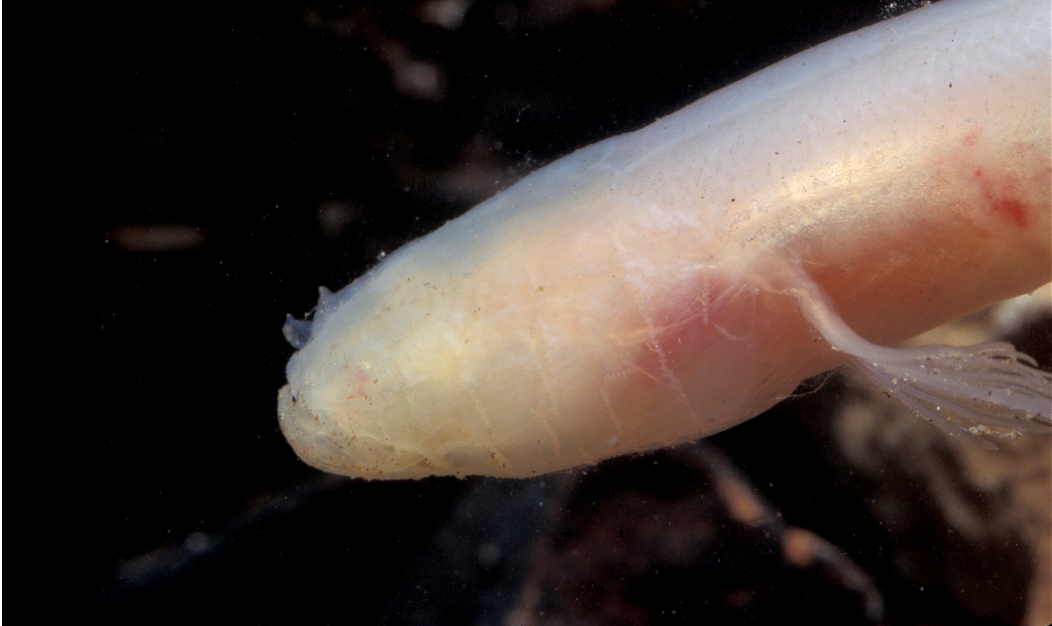Living Together Peacefully
Being small and stygobiotic (Graening et al. 2010), Ozark cavefish are usually bound to live where they are for the rest of their lives, having to depend on those who are terrestrial and able to bring in things from the outside world (MDC, 2014). They’re dependent on grey bats’ guano as a food source both directly and indirectly, guano having secondary crustacean production (MDC, 2014 and Graening et al. 2010). But they are also known to prey upon plankton, isopods, amphipods, crustaceans and larval salamander (USFWS, 2013). This organism as a predator uses their sensory organs to sense movement in the water as mentioned in adaptation.
 These fish have never been observed in
large groups, showing little to no interaction with each other. Although this family, the amblyopsids, typically has a
population size of 150 individuals living together (Graening et al. 2010).
These fish have never been observed in
large groups, showing little to no interaction with each other. Although this family, the amblyopsids, typically has a
population size of 150 individuals living together (Graening et al. 2010).
There is little known about organisms that prey
on or are involved in parasitic activity with the Ozark
cavefish. One organism that has been listed as a predator of the Ozark
cavefish is the sculpin,
Cottus carolinae, (Brown
and Johnson, 2001). One reason
why there is no parasitism is because they are found in only really clean
water (Handwerk, 2003). This cleanliness in the fish environment is why it
has a special nick-name mentioned more in details in the interesting fact.
In the living environment of the Ozark cavefish, this organism is one of
the top predators in the food web (MDC, 2007). But because this organism,
being a fully grown adult fish at only two inches, is so small, there may be
other bigger fish that prey on it, such as the Cottus carolinae (Brown
and Johnson, 2001). Which means that in the food web, it’s near the bottom,
being able to eat mostly everything smaller than itself but being preyed upon by bigger
fish. Something unique about this fish species is that sometimes they
have cannibalistic behavior (Adams and Johnson, 2001), probably eating the younger
Ozark cavefish.
<<Adaptation Homepage Reproduction>>